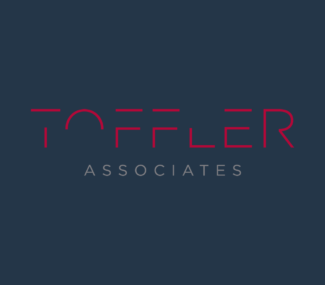Selecting the Right Talent Model is a Strategic Decision in the Future of Work

New technologies and innovative business models are key catalysts of future of work disruptors. And, in the spirit of fighting fire with fire, new technologies and innovative operating models can be the critical enablers of the responses that allow organizations to better prepare for those disruptors.
New employment models enable employers to adapt to workforce disrupters
As discussed in our Navigating the Top 9 Future of Work Disruptors guide, there will be direct impacts to how organizations and workers interact in the talent marketplace. Examining these disruptors will show how new employment models may be the best way organizations can adapt to these disruptors.
- The definition of an employee will continue to evolve. Similar to how the level of personalization grows in nearly every situation as new technologies and innovative business models mature, organizations should prepare for a world of increasingly personalized relationships with workers to provide more flexibility for both parties.
- Remote work is here to stay. The pandemic has accelerated the digital transformation through hardening the infrastructure and establishing the behavioral routines of remote work over the last year. Organizations no longer have to limit their talent to those in the same hometown. This supports personalization on the location dimension.
- Competition for talent extends to life experience & The non-linear career becomes common. Workers want to tailor their working experience to their needs, be they a caregiver who needs flexible hours or someone who thrives on the challenge of a competition. The ability to accommodate tailored requirements and welcome those with non-traditional career arcs will create employment advantages for those organizations.
- New talent models are required for rapidly atrophying skills & Organizational adaptability is required for rapidly atrophying strategies. As the half-lives of skills shorten, organizations will need to constantly redefine the types of skills needed, role descriptions, and talent sources of their talent models as their strategies evolve to keep up with the pace of market changes. Duration of need will be a critical factor in organizations determining how they want to fulfill their talent needs.
Signs an employer’s talent models are outdated
In our experience, we find that employers often still have a dated view of talent.
- They do not evolve role descriptions based on a long-term understanding of strategic needs or evolving market environment; rather, they continue to hire based on historical needs and like-for-like replacements in vacated roles.
- They do not explore the variety of talent acquisition mechanisms available today and match them to the strategic needs of the organization. Contractors (acquired through another organization or directly as an independent; e.g., 1099) are brought in for short-term roles or when a new project requires a new skill set, thus limiting the adaptability of these roles.
- They do not plan for the longer into the future with workforce planning typically done on a 12–18-month cycle vs. a deeper look into the future to adjust today’s approaches to be better prepared for tomorrow’s talent market.
- They design career paths around traditional models rather than being able to support a diverse set of career paths individuals are likely to have.
- They have one-size-fits-all approaches to the employee experience rather than a more segmented and personalized view. Infrastructure and capabilities may limit this, but organizations should begin developing those capabilities to be competitive in the future.
The pandemic has given employers a chance to try different talent models
We’d like to suggest that now is a perfect time to begin the experimentation process with different talent models to develop a deeper understanding how they can fit your organization’s needs. The pandemic has accelerated the changes to our workforce and both employers and workers can benefit from new opportunities.
As we identified in a recent infographic we developed, organizations should understand their strategic needs – by business unit, by function, by role – and determine what potential mix of employment types could be optimal for each situation.
This is where the experimentation can happen. Meaning the variation of inputs and outcomes should be tracked to understand which models work in which situations and why. From traditional full-time and part-time employees and mature contractor models to on-demand talent platforms, crowdsourcing, AI-augmented workers, and teams-as-a-service, the full range of existing and emerging models can be explored to prepare an organization for the future.
Questions to ask before selecting new talent models
There is a new conversation, not unlike the historical build or buy analysis, thinking about when and where organizations should select a non-traditional source for talent. Some questions you can ask to analyze which models are right in which situations include:
WHO? Can you afford the talent full-time? Some skill sets are in high-demand and require a market premium. Consider accessing a talent platform that allows you to source the amount that you need versus hiring a full-time employee.
WHAT? How fundamental to the organization is the role? Even projects and project-based roles can be successfully sourced by different talent models and what knowledge and skills are essential to the organization on an ongoing basis. Some organizations are going so far as to determine which roles are core and which ones will flex as strategies change, skills evolve, and demands shift.
WHEN? How long will this skill set be needed? Given the ever-shortening half-life of knowledge consider when the skill set will become obsolete or no longer needed. And are people with these skills in a position to be retrained or will future skill demands be significantly different?
WHERE? Does talent need to be local? Can you access a regional, national, or global talent market? Some open talent platforms do a great job of finding the best global talent and making that available at competitive rates.
WHY? Would innovative thinking be of value? Consider the value of the new idea and what a challenge-based or crowdsourced perspective could add by way of diverse thought and new ideas.
HOW? Are you using the same talent models because no one in your organization understands how to try new ones? There are organizations that are trying to lower friction between employers and talent. We work with our clients helping them understand how best to acquire talent.
The traditional employment model is not as attractive and, in some cases, not as accessible to all employees. In a recent Gallup study of U.S. workers published by the New York Times, about 64 percent of respondents were employed in a traditional one-to-one employee-employer arrangement. The remaining 34 percent held multiple jobs or had income from one or more self-employment arrangements.
As new technologies and innovative business models create new ways of working, organizations need to be more creative in how they think about “units of labor” and fill talent gaps. They are no longer tied to traditional models. This will allow the most forward-looking organizations to be the ones that adopt the right talent models for their needs and become the most agile and adaptive organizations that are able to move at market speed.
Let us help you understand your future needs and how innovative talent models can be used. Contact us today.
- Categories
- Strategic Planning
- Workforce of the Future


 About the Authors
About the Authors